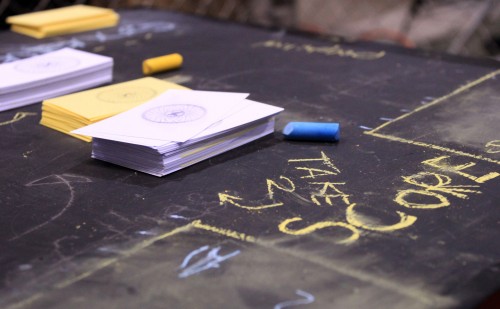Making Games: Stumbling from Design to Debut
We had one semester to make a game.
The class was through the California Institute of the Arts’ Integrated Media department, which styles itself a meeting ground for complimentary métiers. It met each Monday morning in the school’s chilly bowels for a scant two hours – just enough time to write something on a chalk board, high-five or disagree, and then not see each other for a week. It’s a wonder we made anything at all, let alone debuted a prototype at a crowded convention called the Maker Faire three hundred miles north. What we brought is not what we intended – a partially miscarried hybrid of real and vestigial features – but game development, like any collaborative undertaking, isn’t a straight shot.

Our group was nigh-ideal: five graduate students and one talented BFA, no one from the same background. There was a programmer, a theater set designer, two breeds of visual artist, an ambient musician, and myself – the writer. Previous groups had gone the techy route, rigging RC cars with baby monitors, but we wanted to straddle multiple media – to build a game that played in physical spaces, drew from digital content, and answered to verbal interaction. By the end of our first class we had a draft.
“I’ve never seen a game come together so quickly!” the class’ instructor announced. “It’ll be great at the Maker Faire.”
That’s the thing, though – you can chart a voyage to the moon, but landing on the surface is another thing entirely. High-concept ambitions are irrelevant until you see them through.
Our design on paper was a monster, something you would murder if you found it in a lab. The hulking Franken-game included real-world installations, app-based digital avatars, RPG-esque progression, and heavy narrative content.
Sounds rad, right? Proposals often do.
